
|

|
|
Home Site Search Contact Us Subscribe
|
|
|
Best Architecture Books of 2012 10 books reflect the changing climate - in every sense - of the profession. By Norman Weinstein December 14, 2012 Daniel Savoy, Venice from the Water: Architecture and Myth in an Early Modern City (Yale University Press, $65). Double dare you to read this meticulously researched, gorgeously illustrated, vigorously written history of the design of pre-modern Venice and not think of recently flood-damaged Lower Manhattan. Savoy’s thesis is that Venice’s design represented a triumph of creative urban thinking intended to mythologize and glorify its image through waterways as public spaces. Writes Savoy, “. . . the waterways were not merely utilitarian routes of transportation but integral components of a unified land and aquatic-based spatial network.” His preface is entitled “Water as Urban Space.” A reminder in our time of countering rising tides threatening cities that the best solutions need to be resolutely aesthetic as well as technical.
Architecture for Humanity, Editors, Design Like You Give a Damn [2]: Building Change from the Ground Up (Abrams, $35). Perhaps this urgently needed book of creative design solutions for the poorest and most vulnerable to climate change, economic exploitation, and political violence, can become an annual publication. Of particular beauty are the bamboo “butterfly houses” for Thai orphans that suggest how a playfully elegant modern minimalism can fuse with emergency-driven vernacular low-tech design. Inspirational ideas for those pushing for a more service-oriented view of architectural education and practice.
Bruce King Komiske, Editor, Designing the World’s Best Children’s Hospitals, Vol 3: The Future of Healing Environments (Images Publishing, $70). There’s little text in this spectacularly produced coffee-table book of photos (minus plans, alas) of snazzy new children’s hospitals. A brief paragraph by HDR’s Jim Hohenstein is spot-on in affirming the value of this volume of kid-oriented, therapeutically yet whimsically designed, explosively colorful hospitals: “The future will challenge us to create spaces that enhance the patient experience – where form not only challenges function, but feelings as well, and where laughter or a smile might just become a key measure of success.”
Victoria Newhouse, Site and Sound: The Architecture and Acoustics of New Opera Houses and Concert Halls (The Monacelli Press, $50). “I’m all ears” is an ironic idiom when spoken by most architects who work in a perpetual state of “all eyes” too much of the time. Newhouse has a comprehensive aural vision of sound architecture globally. And if that mixed metaphor of “aural vision” confounds, you’re strongly advised to read this history of music-driven architecture and a most cogent contemporary overview of notable (pun needed) structures.
Tod Williams and Billie Tsien, The Architecture of the Barnes Collection (Skira Rizzoli, $50). All prepared to hate this monograph by the architects responsible for (arguably) the most controversial building in Philadelphia’s history, there’s a persuasive clarity in how Williams and Tsien justify their design for a program dictated by that notable architectural critic, Judge Ott of Lower Merion. By keeping unsullied the art ensembles Barnes displayed at his original site, there were constraints that even a divine architect for this large a public museum could find maddening. Like the original divine architect, Williams and Tsien did variations on a blazing theme of “Let There Be Light.” The drawings, plans, photos, and straight-ahead text, along with a coyly seductive intro by Kenneth Frampton, dodge the ethical and art-inspired issues likely to be settled in the 25th century. You want good ethics or good museum design? Sorry. Done deal.
Francis D.K. Ching and James F. Eckler, Introduction to Architecture (Wiley, $55). This is literally a “Greatest Hits” compilation culled from Ching’s eight previously published graphics-intensive books that constitute a modest bookshelf of architectural primers salutary at any point in one’s career. Once you get over Ching’s sluggish writing style, there’s something totally charming and informative in his drawings, as if his pencils are his muses. His pencils can be verbose and wooden in every sense, but his splendid pencil drawings flooding this survey are elegantly to the point. A nice gift for your family member who wants to know what architects do in a studio – but finds Facebook too text-heavy for his or her attention span.
Jeanne Gang & Zoe Ryan, Editors, Building/Inside Studio Gang Architects (Yale University Press, $45). Try reading this carefully crafted overview of a (the?) great American architectural office starting from the back of the book to the front. There’s a dynamic interview between Sarah Whiting, Dean of Rice University’s Architecture School and Gang that suggests that the secret of Gang’s well-deserved popularity rests squarely on a love of materiality, a trans-disciplinary curiosity, and an extraordinary perceptivity in interpreting client wishes. And a community service ethos many a starchitect would do well to emulate.
Henri Stierlin, Persian Art & Architecture (Thames & Hudson, $65). Stierlin, A French architectural historian, has penned many generously illustrated introductory books – maybe too many? – written for a mass audience to popularize traditional Islamic architecture. This isn’t a bad thing, since the uninitiated to this extraordinary architectural heritage shouldn’t have to read texts as felicitously written as most doctoral theses. Overwhelming photography of sites in Iran you won’t soon visit abound – plus a reference to the neglected Islamic scholar Henri Corbin that you should follow with grail-search intensity if this architecture speaks to you.
Siobhan Roberts, Wind Wizard: Alan G. Davenport and the Art of Wind Engineering (Princeton University Press, $29.95). How can one of the best architectural books of the year be a biography of a genius of wind engineering? If you have to ask such a query, you really need this book pronto. Davenport’s research into designing with wind in mind worked with the highest profile projects imaginable: the Sears Tower, Shanghai’s World Financial Center, the CN Tower, and the Golden Gate Bridge. Note the book’s titles fuses “art” and “engineering” in the service of designing for increasing turbulent atmospheres. And Roberts delightfully illuminates the humanity of the guy who summarized his life work by quoting Bob Dylan’s “The answer is blowin’ in the wind.”
Eliot Weinberger, Editor, The Poems of Octavio Paz (New Directions, $39.95). This judiciously cherry-picked selection of the Nobel Prize-winning poet (who also wrote trenchant books on architecture and art) by his most famous translator is not simply for that miniscule band of architects who read poetry for pleasure off the job. Paz didn’t simply include images of great architecture in his poetry spanning six decades; he thought architecturally as he wrote lyrically about the aesthetic and political consequences of architecture. From experiences living in Mexico and India, and with a sensibility studied but not academic, there are lessons in thinking poetically while working architecturally in these sensual and intellectually meaty poems.
Norman Weinstein writes about architecture and design for Architectural Record, and is the author of “Words That Build” – an exclusive 21-part series published by ArchNewsNow.com – that focuses on the overlooked foundations of architecture: oral and written communication. He consults with architects and engineers interested in communicating more profitably; his webinars are available from ExecSense. He can be reached at nweinstein@q.com.
More by Weinstein:
Albert Barnes Offers
Critical Response to Placement of New "Barnes"
A Meditation on the Beauty of Zaha Hadid's Door Handle Hadid's design issues a challenge: define beauty by lyrically playing with illusion.
Why
"Greatest Hits" Lists by Architecture's Stars Should Be Mocked
Celebratory Meditations on SANAA Winning the Pritzker Prize
Op-Ed: Life After Ada: Reassessing the Utility of
Architectural Criticism
BOOK REVIEWS
The Pesky Persistence
of Psychological Encounters with Home Design
Tadao Ando's
Thoughtful Heart
"Just Trying to
Do This Jig-Saw Puzzle"
Imperfect Health:
Probing the Porous Interface between Architecture and Health
Book Review:
Advancing Windswept Design: Pointers from Art Nouveau, Zaha Hadid, and Charles
Sowers
Book Review:
Laboratory Architecture for Observing Nature at Play
Book Review: Tracing
a Hidden Track from Adolf Loos as Modernist Architect to Jennifer Post as
Modernist Interior Designer
Two Books to
Accelerate the Translation of Ideas into Practical Forms
Book Review: How to
be a Useful Architectural Critic: Alexandra Lange's Perspicacious Primer Points
the Way
Michael Sorkin:
Architectural Critic as Scam Scanner and Urban(e) Design Sage
Best Architecture
Books of 2011
Book
Review: Pencils that Refuse to Die: Meditations about New Books on
Architectural Drawing
Book
Review: "One Million Acres & No Zoning": Lars Lerup's Outrageous
Encomium to Houston Instructs and Infuriates
Book
Review: Talkin' 'Bout (Not) My Generation: Uplifting Gen X Architects Showcase
Pragmatic Optimism
"Frank
Lloyd Wright's Guggenheim Museum": Bravura Example of an Architectural
Documentary - Wright's Guggenheim Done Right
Book
Review: Diving into Architecture from Every New Angle: Reading Guillevic's
"Geometries"
Book
Review: "Immaterial World: Transparency in Architecture": Marc Kristal
crystallizes increasingly complex notions of transparency with a light touch.
Book
Review: "Visual Planning and the Picuresque" by Nikolaus Pevsner.
Edited by Mathew Aitchison
Book
Review: How New Urbanism's Case Triumphs Best Through "The Language of
Towns & Cities: A Visual Dictionary" by Dhiru A. Thadani
Best
Architecture Books of 2010
Book Review:
"Architecture and Beauty: Conversations with Architects about a Troubled
Relationship": Yael Reisner exuberantly interviews architects about beauty
Book
Review: Shedding Light on Concrete: Tadao Ando: Complete Works 1975-2010 by
Philip Jodidio
Book
Review: Sage Architectural Reflections from Architecture's "Athena":
Denise Scott Brown's "Having Words" distills a lifetime of theorizing
and practice into practical and succinct guidance for thriving through
difficult times
Book
Review: Keeping the Architectural Profession Professional: "Architecture
from the Outside In: Selected Essays by Robert Gutman" celebrates Gutman's
legacy as invaluable outsider
Book
Review: "Design through Dialogue: A Guide for Clients and
Architects," by Karen A. Franck and Teresa von Sommaruga Howard
Twilight Visions: Vintage Surrealist Photography Sheds
New Light on Architecture
Best
Architecture Books of 2009
Book Review: "Gunnar Birkerts: Metaphoric Modernist" by Sven Birkerts and Martin Schwartz A major architect in the history of Modernism finally receives recognition – and sundry asides about why Modernism never exited.
Book Review:
"Urban Design for an Urban Century: Placemaking for People," by Lance
Jay Brown, David Dixon, and Oliver Gillham
Book Review:
"Everything Must Move: 15 Years at Rice School of Architecture
1994-2009"
Book Review: A Subversive Book Every Architect Needs:
"Architect's Essentials of Negotiation" by Ava J. Abramowitz
Book Review: A Perspective from One Elevation: "Conversations With Frank Gehry" by Barbara Isenberg Gehry's conversations offer portraits of an astute listener as well as talker, an architect as aware of his flaws and limitations as of his virtues.
Best Architecture Books of 2008
Book Review: You've Got to Draw the Line Somewhere A review of Drafting Culture: a Social History of Architectural Graphic Standards by George Barnett Johnston
Book Review: "NeoHooDoo: Art for a Forgotten Faith," edited by Franklin Sirmans Sharpen your pencils - and get ready to do a NeoHooDoo shimmy
|
(click on pictures to enlarge) 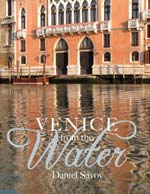 Venice from the Water 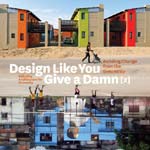 Design Like You Give a Damn [2]: Building Change from the Ground Up  Designing the World’s Best Children’s Hospitals 3: The Future of Healing Environments 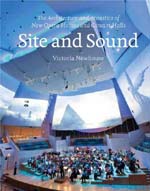 Site and Sound: The Architecture and Acoustics of New Opera Houses and Concert Halls 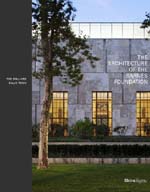 The Architecture of the Barnes Collection 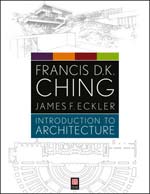 Introduction to Architecture 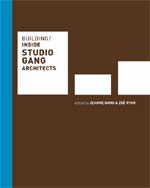 Building/Inside Studio Gang Architects 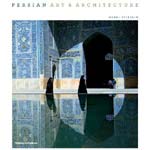 Persian Art & Architecture 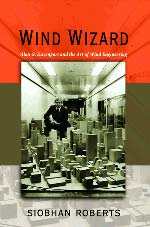 Wind Wizard: Alan G. Davenport and the Art of Wind Engineering 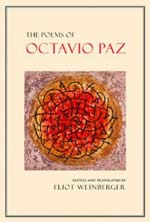 The Poems of Octavio Paz |
© 2012 ArchNewsNow.com